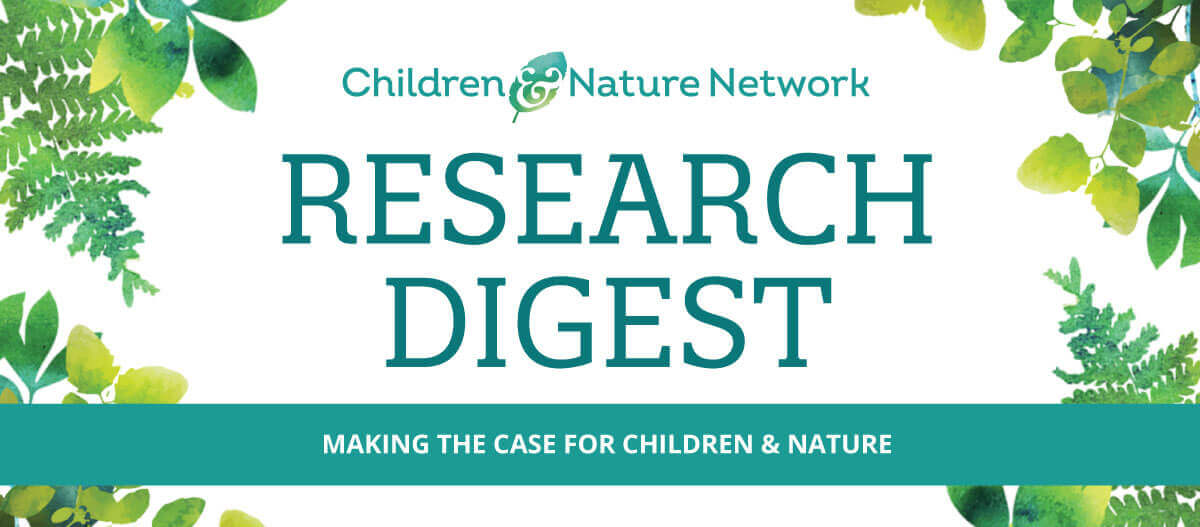Biophilic Design in Schools
Schools can play a crucial role in connecting kids to nature. Applying biophilic design to schools is one way to promote this connection, while also enhancing the learning environment for students and teachers. The benefits of more nature-related elements in classrooms and schools include greater attentional performance, reduced stress, more desirable behaviors, and improved cognitive and emotional states.
Biophilia in schools may influence students’ place relationships and related identity formation
Photo essays completed by thirteen adolescent students from two vertical (high-rise) schools in Australia indicated that they valued the biophilic elements of their schools and considered them to be sources of inspiration, stress relief, and optimism. The students also “strongly related their place experiences and the becoming of their identities to the biophilic elements in and around their schools.”
Baber & Cleveland, 2024. Biophilia and adolescents’ sense of place in Australian vertical schools.
Access Study
A biophilic designed learning environment benefits students
This study, conducted over a three-year period in an elementary school in Italy, investigated possible benefits to students (age 6-11) of a biophilic learning environment. Data collected before and after the installation of biophilic features to several classrooms showed that the more nature-oriented environments promote attentional performance, perceived restorativeness, and affiliation with nature.
Barbiero et al., 2021. Bracing Biophilia: When biophilic design promotes pupil’s attentional performance, perceived restorativeness and affiliation with nature.
Access Study
Biophilic design in schools could improve academic and other desired outcomes
This research, conducted in the U.S., included an experiment with biophilic interventions at a single classroom in one school and an evaluation of real-life biophilic design applications at an entirely new school. Pre- and post-implementation measurements assessing the impact of biophilic design at the first school showed significant improvements in learning and stress reduction. Positive results at the second school included fewer behavior referrals, better teacher retention, lower absenteeism, and improved test scores.
Browning & Determan, 2024. Outcomes of biophilic design for schools.
Access Study
The science of biophilic/biomimicry design practices may be useful for integrating nature into urban schools
This conceptual paper focuses on the importance of including nature in the design of urban schools and offers some ideas on how to apply the science of biophilic/biomimicry design practices to accomplish this goal. Specific examples of successful applications are offered, including the application to vertical schools. The Biomimicry Design Spiral is offered as an approach to engaging both building designers and education professionals in the biophilic design process.
Duffy, 2024. The ‘nature’ of vertical school design—an evolving concept.
Access Study
Biophilic design can make schools healthier places for teaching and learning
This systematic review of 67 academic articles considered how the health and well-being factors associated with biophilic design in health-related settings might be applied to educational settings to improve teaching and learning outcomes. The reviewed articles included 44 mentions of positive human responses to biophilic elements, including psychological, physical, emotional and mental outcomes. The most mentioned impacts in the study were related to academic performance and affect.
Fisher, 2024. The biophilic school: A critical synthesis of evidence-based systematic literature reviews.
Access Study
Teachers with biophilic elements in their schools report positive impacts on learning
This study included the development of a framework for evaluating biophilic characteristics in primary schools and then used that framework to evaluate two schools in England. One school was rated as “low biophilic” and the other “higher biophilic.” A survey completed by teachers and parents indicated that they perceived children to prefer the school with the higher biophilic rating. Teacher responses also suggested that the biophilic elements have a positive impact on learning.
Lanzaro & Ucci, 2024. Teacher and parent perception of biophilic conditions in primary-school environments and their impact on children’s wellbeing.
Access Study
Various affordable and impactful strategies can be used to add biophilic features to existing K-12 schools
A review of existing biophilic frameworks during phase one of this two-phase study resulted in the identification of 42 strategies that could be used to add biophilic features to existing K-12 schools. Responses to a user perception survey administered during phase two resulted in prioritizing the strategies based on impact and affordability. This study indicates that there are numerous affordable strategies that can be used to introduce biophilic features into existing schools.
Leif & Loftness, 2024. A toolkit of biophilic interventions for existing schools to enhance student and faculty health and performance.
Access Study
Biophilic design principles can be applied to vertical schools in hot-humid climates to create learning environments that foster student development
This study developed a set of guidelines for integrating nature into vertical (high-rise) schools in hot-humid climates. The guidelines were based on a review of the related literature and on case studies of six exemplary schools. The study highlighted the importance of active spaces where interaction between indoor and outdoor environments happens, noting how such spaces allow for a shift from formal learning to informal learning, and promote student development.
Salari & Westbrook, 2024. Ascending to well-being through mediated spaces: An alternative to informal learning and physical activity environments in vertical schools.
Access Study





